Welcome to Ceramic Review
Ceramic Review is the magazine for contemporary and historical ceramics, ceramic art and pottery.
Ceramic Review Issue 334
July/August 2025
Ceramic Review is the magazine for contemporary and historical ceramics, ceramic art and pottery.
July/August 2025
A love of nature inspires ceramicist Reiko Kaneko to create pieces for a list of high profile clients. Her work has been gaining status; however, she plays down her accolades while speaking to Rory Robertson
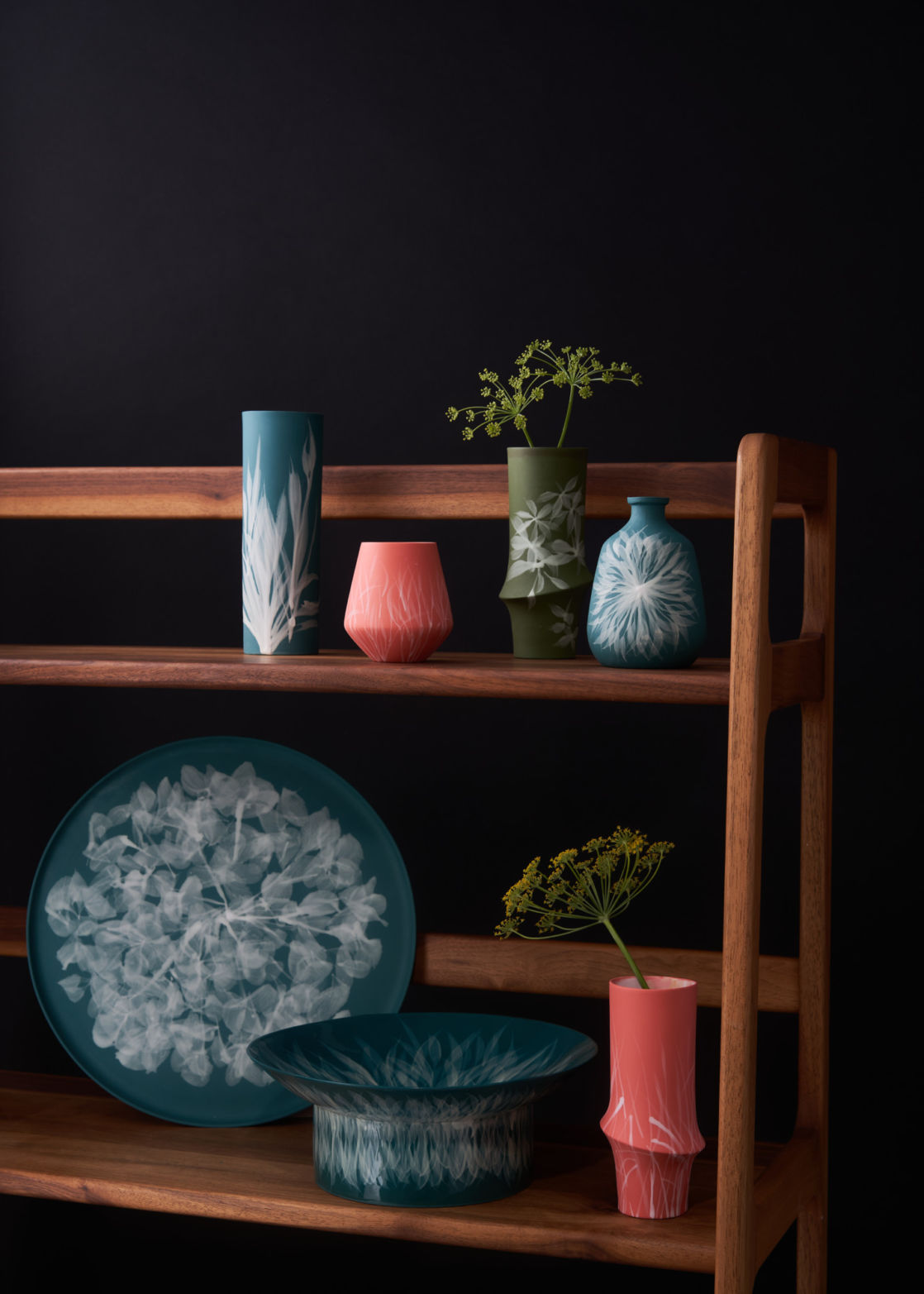
I’ve got a four-year-old daughter, and that’s my main job,’ explains ceramicist Reiko Kaneko. But she also teaches on the MA Ceramics course at Staffordshire University, a course which she explains is really important for the ceramics industry, while simultaneously running two studios – a main studio in Stoke where she has a full-time assistant, and a personal garden studio in North London where she tends to work solo.
Kaneko produces pieces for clients such as esteemed London-based design store SCP, The Fat Duck restaurant, and, recently, the London Flower School. ‘I love anything related to gardens and gardening,’ she says, and nature is definitely the mainstay of inspiration for her work. She was born and raised in the Japanese countryside until the age of eight, when sadly her father passed away. Her parents were not creative influences per se, but her Japanese Obachan’s (grandmother’s) sister was. ‘My brother and I would visit her in the countryside. She taught us the art of Sumi-e ink painting and I still use the skills today,’ says Kaneko.
It is fair to say she has an eye for beautiful tones, often drawing on the warmth of terracotta, shades of white and natural pigments, and then sometimes a confident shot of colour. ‘I’m not very good with colour,’ she says, but she explains further: ‘what I might lack in colour skill, I try to make up for with stained clay bodies and glazes.’
CERAMIC AWAKENING
Confessing that she has never traditionally trained in ceramics, Kaneko, who studied Art & Design at Central Saint Martins (CSM) in London, says that it was during 2007, while visiting Tony and Heather Douthwaite who own and run Topaz, a bone china factory in Stoke-onTrent, watching Tony dipping his china in glaze, that sparked her love for the medium. After graduating from CSM in 2005, Kaneko subsequently moved to Stoke-on-Trent and has developed a lasting love for both the people and what she refers to as the magical post-industrial landscape there. It was a twofold decision. Her London studio rent was hiking, and Stoke-on-Trent offered the rich history of ceramics that she needed to grow her business. ‘I find the people of Stoke-on-Trent really warm and generous, and something has drawn me to them,’ she explains. ‘The way they make things, and the history and heritage of ceramics has something truly special to offer.’
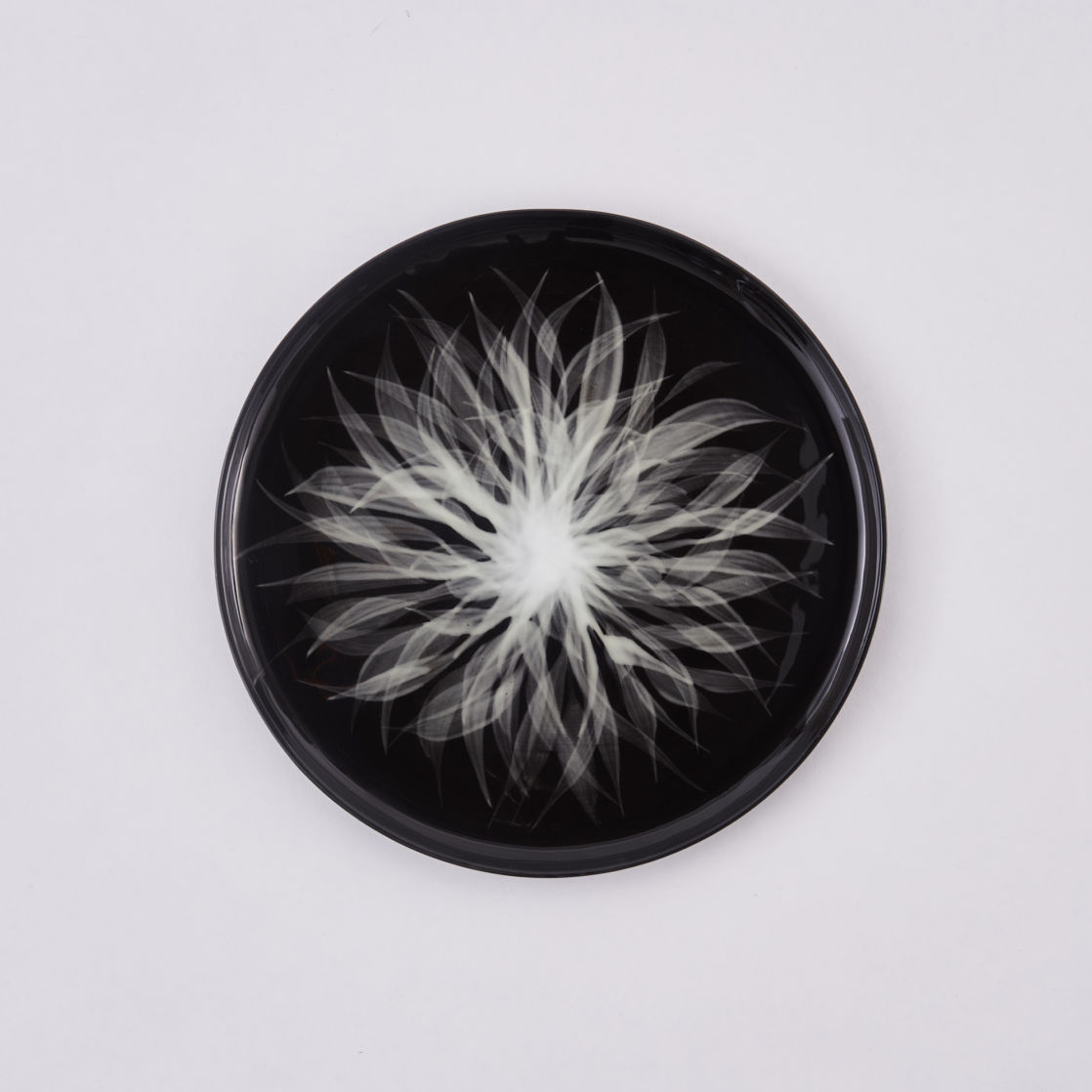
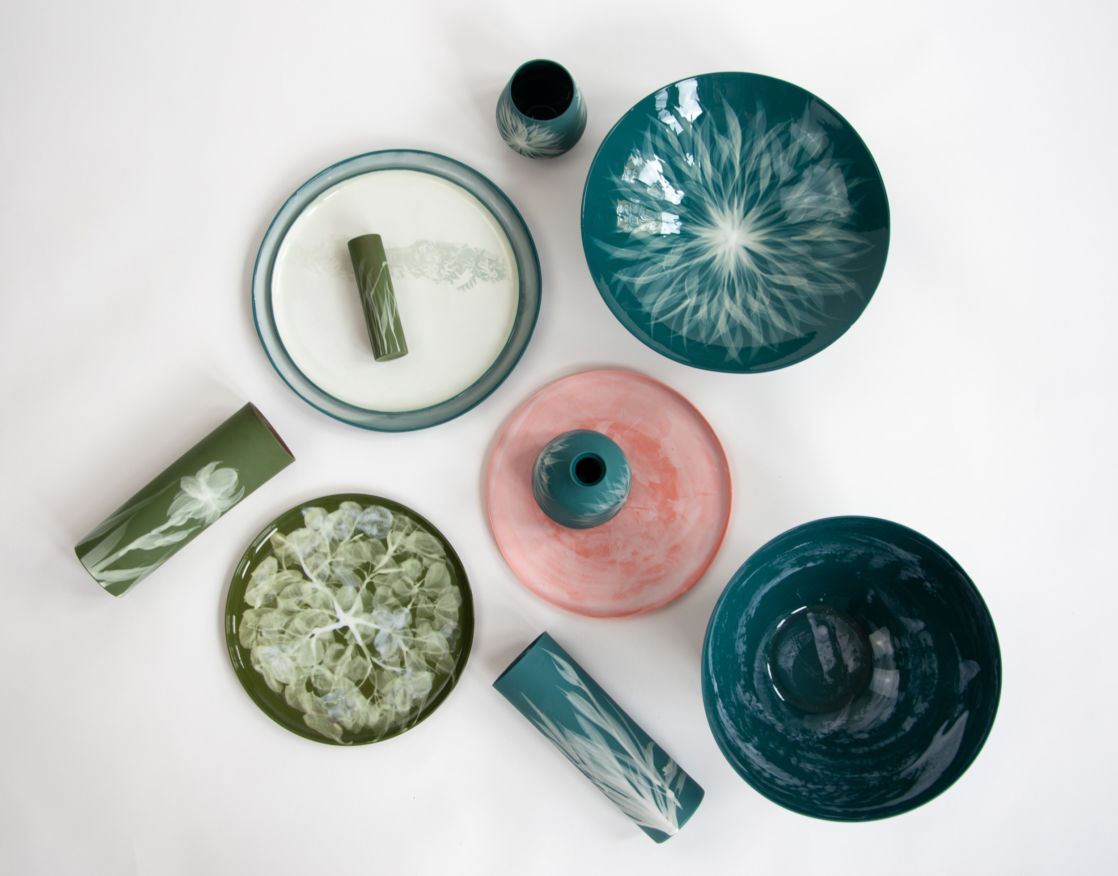
In 2017, she moved back to London, and a creative community that she enjoys equally but for different reasons: ‘I love London, it is intense, but it also has an amazing creative energy.’ However, through her continued teaching at Staffordshire University, a part-time post she started in 2018, she says she is even more in touch with Stoke-on-Trent than when she lived there. Crucially, the teaching allows her to develop the ceramic skills of others, as well as her own. ‘I never thought I would be a natural teacher,’ she explains, ‘but, running my own business provides me with the knowledge and experience to teach others about the commercial side of making and it is an opportunity to really question, think, and have conversations about the future of ceramics. It is so important.’
BODY OF WORK
Looking back to the pieces Kaneko was creating in 2012, items like Breakfast Express, a ceramic breakfast set with wooden wheels, and a series of fine bone china mugs with witty and bright, colourful designs on them, you wouldn’t necessarily associate her ceramic style today with those earlier pieces. But she puts it all down to growth and how her clients have supported her – and also grown with her – over the past decade.
Initially, she says she was largely encouraged by Hidden Art, which used to participate in the London Design Festival. However, she has also been working with SCP since 2013, most recently adding The Botanical Collection to her work for them. Kaneko cites Sheridan Coakley (the founder of SCP) as ‘a real mentor’. ‘When I moved back to London, I inherited a white dahlia in the garden and wanted to incorporate it into the ceramics collection I was making for SCP. So, I cast the plate in black and then painted a white slip over that. It looks like cyanotype photography, with the translucency of the slip coming through,’ she explains. The first pieces were glazed on, but then Kaneko started researching the pâte-sur-pâte technique, which she now uses for these pieces.
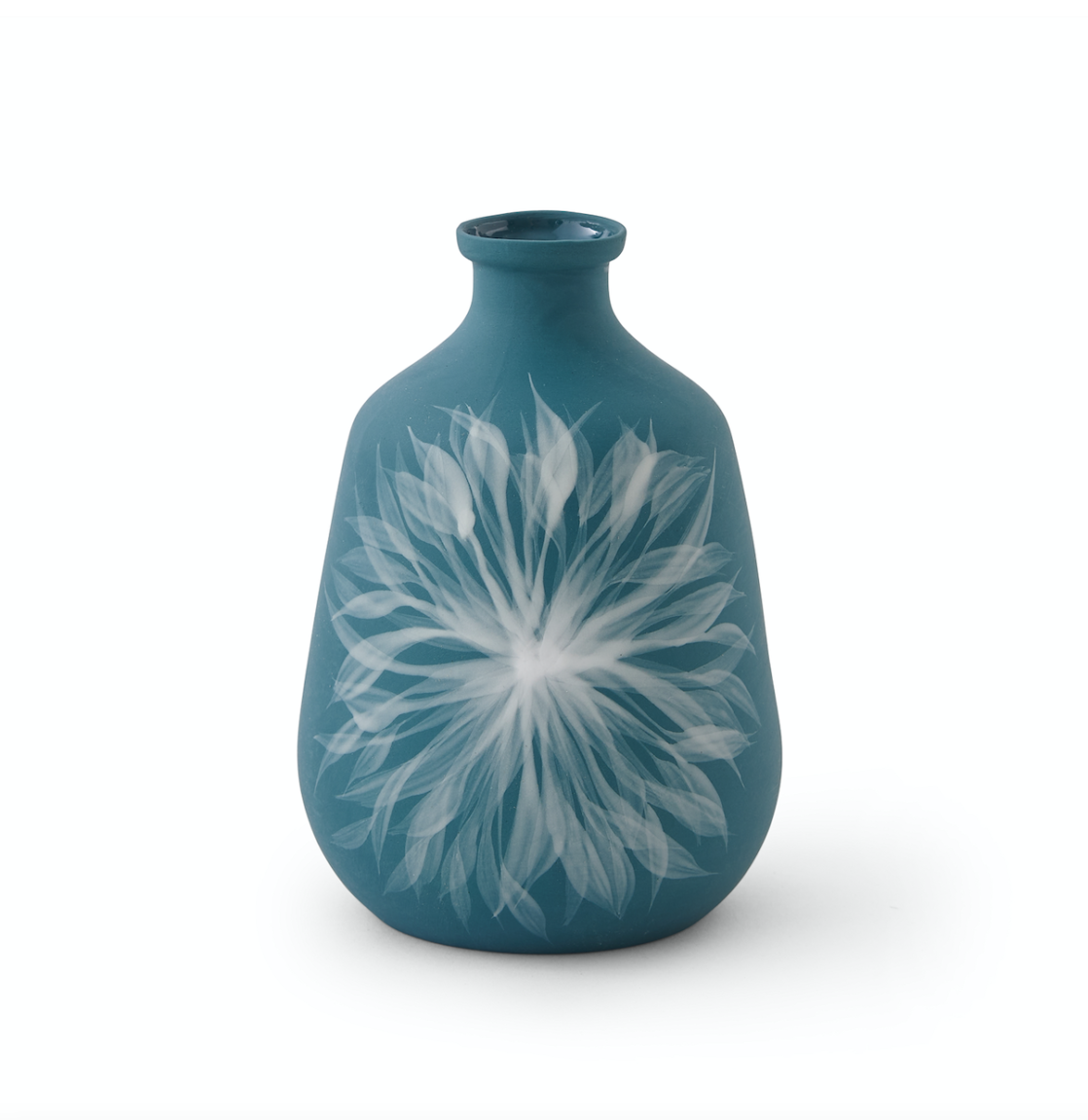
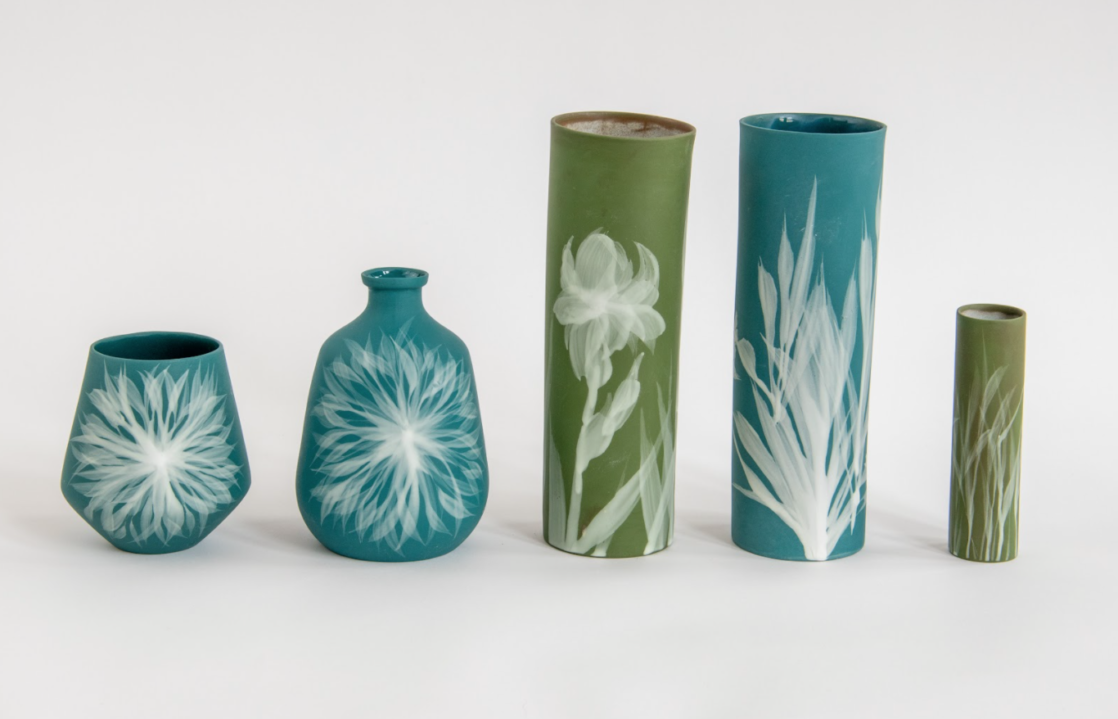
The Botanical Collection sits alongside her Terracotta Collection, and a selection of furniture called Orlando (beautifully petite in scale), all exclusively designed for SCP. There is also an entire body of work, including bespoke tableware, that she has created with long-standing client The Fat Duck, which is led by Heston Blumenthal. ‘I’ve just made nearly 3,000 Christmas decorations for them,’ says Kaneko. ‘They will be giving them away as part of their festive menu.’ More recently, she has started working with the London Flower School, producing her Ikebana cracked black stoneware vessels. Kaneko explains: ‘There has been so much going on in the world recently – issues around the environment and Black Lives Matter; I have been anxious about these things. This project was integral as I was able to bring it back to me. I have always been interested in cracks. Nature will invariably find a way into things; nothing is ever perfect or completely smooth, it is not how the world works. There are always going to be fissures and cracks at some point and there is beauty in them – a democratic beauty.’
PROCESS AND TECHNIQUES
It was quite a change of process moving from her usual bone china to black stoneware for her Ikebana vessels but as Kaneko explains: ‘I have been moving more into the craft side of things recently. It is a strange transition – most potters go from craft potting to industrial, but I have gone the other way, from industrial into craft potting.’
‘I mainly cast bone china and decorate with slips or glazes. But I also hand-build a little with porcelain or stoneware. I fire up to 1230˚C, depending on the finish required.’ She has never been afraid to experiment with other materials and new techniques and has also been etching and trying sgraffito. ‘There is technology at the university where we can laser etch, so I have been experimenting with that, placing the slip on top and then digitally etching it away.’
Kaneko is fascinated with traditional techniques but also digital technology and advancements. As a passionate advocate for ceramic education and industry, she is consistently looking to the future. ‘I will be working more with digital decorating techniques, as well as creating video collaborations with fellow artist and film maker Man Kit – collecting interviews and stories,’ she explains. There are also more projects for hospitality clients in the pipeline, which Kaneko is really excited about. With a genuine love for ceramics and her work we cannot wait to see what comes next.
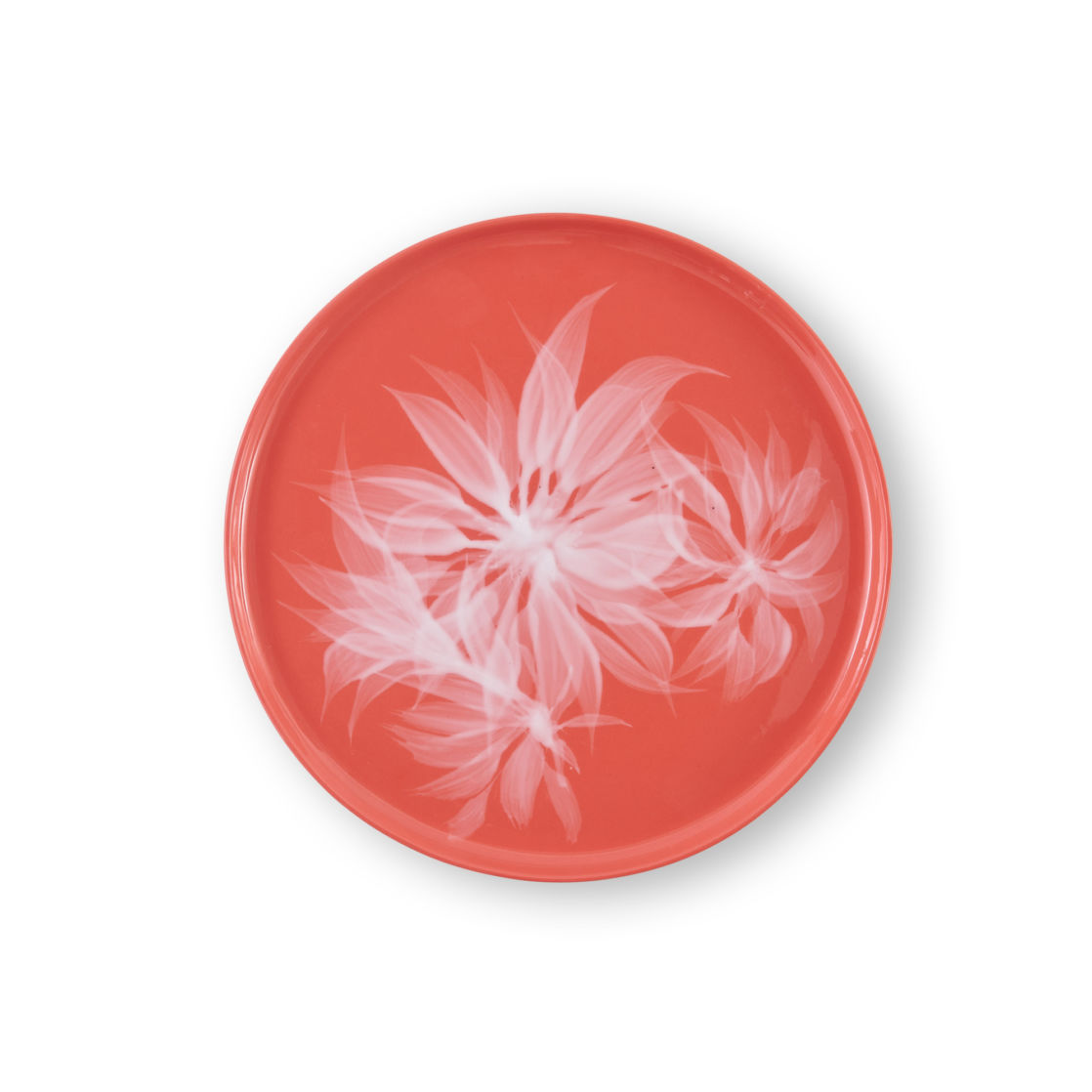
For more details visit reikokaneko.co.uk; to purchase items visit scp.co.uk
Images: Yeshen Venema; SCP; courtesy of the artist